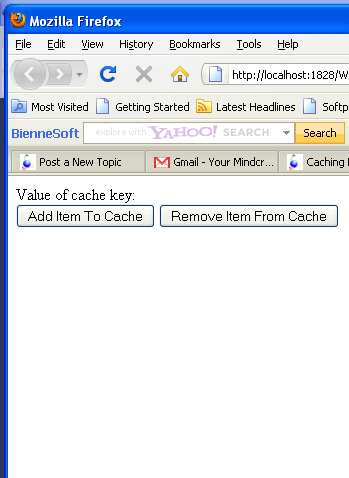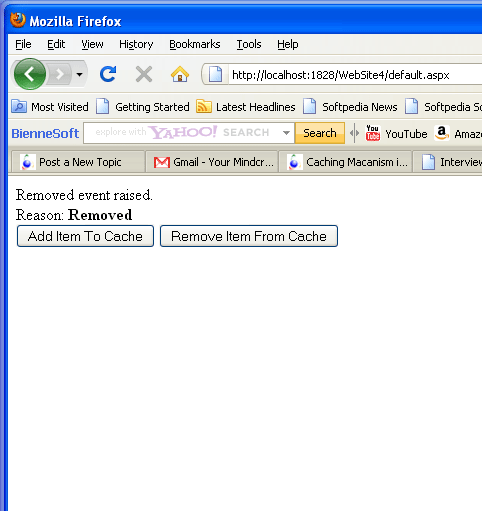Caching Mechanism in ASP.NET Using VB.NET
In this article we demonstrate the Caching Mechanism and how it helps to achieve important aspect of Quality of Services.
Caching is a mechanism for keeping content in memory for later use. It helps web applications operate with higher performance by reducing the amount of work. Different people use different terms for explaining the concept of cache i.e. managing data, state management and, cache management. Although cache management is not an issue in Windows applications, it has always been a challenge in the web environment.
Caching helps us to achieve three important aspects of QoS (Quality Of Service):
- Performance - Caching improves application performance by minimizing data retrieval and formatting operations.
- Scalability - Since caching minimizes data retrieval and formatting operations, it reduces the load on server resources thus increasing the scalability of the application.
- Availability - Since the application uses data from a cache, the application will survive failures in other systems and databases.
How to use web caching save data to RAM, and improve data access times therefore.
1.Declare the variables
Shared itemRemoved As Boolean = False
Shared reason As CacheItemRemovedReason
Dim onRemove As CacheItemRemovedCallback
2.Define the method of AddItemToCache, it will use Cache.Add to add items to cache
Public Sub AddItemToCache(ByVal sender As Object, ByVal e As EventArgs) HandlesSubmit1.ServerClick
itemRemoved = False
onRemove = New CacheItemRemovedCallback(AddressOf Me.RemovedCallback)
If (IsNothing(Cache("Key1"))) Then
Cache.Add("Key1", "Caching", Nothing, DateTime.Now.AddSeconds(30),
TimeSpan.Zero, CacheItemPriority.High, onRemove)
End If
End Sub
3.Define the method of RemoveItemFromCache, it will use Cache. Remove to remove items from cache
Public Sub RemoveItemFromCache(ByVal sender As Object, ByVal e As EventArgs) HandlesSubmit2.ServerClick
If (Not IsNothing(Cache("Key1"))) Then
Cache.Remove("Key1")
End If
End Sub
4.When using the method of Cache.Remove , it will be leaded to invoke RemovedCallback method
Public Sub RemovedCallback(ByVal k As String, ByVal v As Object, ByVal r AsCacheItemRemovedReason)
itemRemoved = True
reason = r
End Sub
5.Page Load coding
Protected Sub Page_Load(ByVal sender As Object, ByVal e As System.EventArgs) Handles Me.Load
If (itemRemoved) Then
Response.Write("Removed event raised.")
Response.Write("<BR>")
Response.Write("Reason: <B>" + reason.ToString() + "")
Else
Response.Write("Value of cache key: <B>" + Server.HtmlEncode(CType(Cache("Key1"),String)) + "</B>")
End If
End Sub
6.Coding of HTML of the Web Page
<%@ Page Language="VB" AutoEventWireup="false" CodeFile="Default.aspx.vb" Inherits="_Default"%>
<!DOCTYPE html PUBLIC "-//W3C//DTD XHTML 1.0 Transitional//EN""http://www.w3.org/TR/xhtml1/DTD/xhtml1-transitional.dtd">
<html>
<body>
<Form id="Form1" runat="server">
<input id="Submit1" type="submit" OnServerClick="AddItemToCache" value="Add Item To Cache"
runat="server"/>
<input id="Submit2" type="submit" OnServerClick="RemoveItemFromCache" value="Remove Item From Cache" runat="server"/>
</Form>
</body>
</html>
Output:

